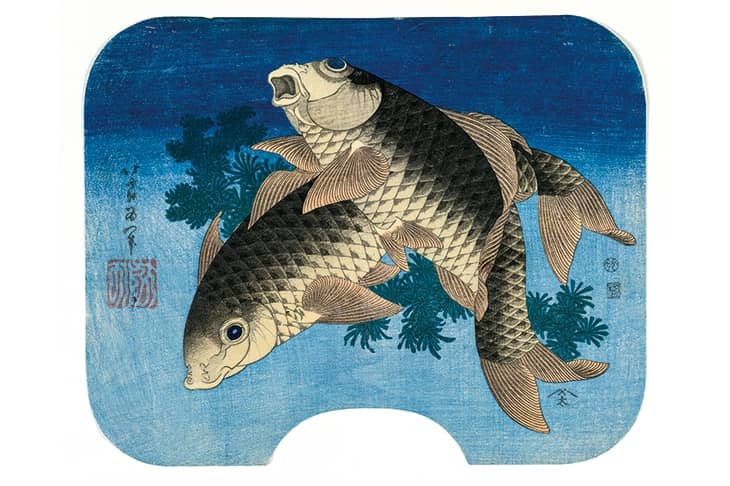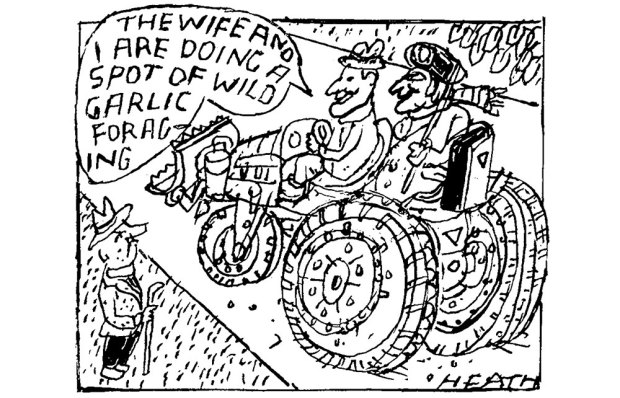All anglers are obsessive, but carp fishers are the most single-minded of all. They think nothing of spending weeks on the banks of a muddy lake or gravel pit, lines and breath baited, waiting for a bite. Ask an aficionado what motivates him and he’ll speak — with an intensity that sounds a lot like love — about the carp’s unrivalled cunning and fighting ability: its coquettish, crafty takes and its long, blistering runs. Most of all he will talk in awe about the sheer, meaty heft of these fish, of their unparalleled weight and girth.
Carp fishing is a particularly British obsession, which is surprising, as the species is a relative newcomer to our waters. In The Compleat Angler, first published in 1653, Izaak Walton described the carp as ‘the queen of rivers; a stately, a good, and a very subtil fish’, and asserted that the species had been brought to England only 100 or so years previously by one ‘Mr Mascal, a gentleman that then lived at Plumsted in Sussex, a county that abounds more with this fish than any in this nation’. (In fact it seems likely that carp arrived on these shores sometime in the 14th century.)
In Walton’s day carp were primarily for eating — their tolerance for poor quality water meant they could be easily bred in large stock ponds, often attached to monasteries — but these days it’s all catch and release. Carp are the prized target of course anglers, who treat them more as pets than as quarry. When a carp angler catches one he will lay it tenderly on a cushioned mat (pre-wetted so as not to damage the fish’s coating of protective slime) before delicately unhooking it. He will apply antiseptic salve to its lips, then pose for photographs, cradling his catch with all the pride of a new father.
Many of the largest carp in Britain have become celebrities. They’re given names; their vital statistics are recorded as assiduously as a supermodel’s. For years the heaviest was ‘Two Tone’, a huge common who lived in Conningbrook Lake in Kent. Two Tone was a wily fish, caught once or twice a year, which only made him more alluring. When he was found floating — dead — on the surface of the lake in 2010, anglers from across the country came out to mourn.
Carp have only got bigger in the decade since, caused in part by better husbandry and care, but also by more intense feeding, which has created some consternation in the carp fishing world. Catching 40lb-plus fish used to be big news, but now there are around 1,000 fish over that weight in British waters. Whether these monstrous fish represent a sporting challenge is endlessly debated in the specialist press.
Last year a 14-year-old angler named Jensen Price landed a 73lb fish (the weight of a ten-year-old child) named ‘Marshall’ from a Cambridgeshire fishery. His claim on the record was denied by the British Record Fish Committee because, they argued, ‘the weights stated for the overall population of carp in the fishery are unsustainable in a naturally fed venue, where the only additional food source is anglers’ bait’. You wonder what Walton would have made of a catch like that.
Got something to add? Join the discussion and comment below.
Get 10 issues for just $10
Subscribe to The Spectator Australia today for the next 10 magazine issues, plus full online access, for just $10.
You might disagree with half of it, but you’ll enjoy reading all of it. Try your first month for free, then just $2 a week for the remainder of your first year.














Comments
Don't miss out
Join the conversation with other Spectator Australia readers. Subscribe to leave a comment.
SUBSCRIBEAlready a subscriber? Log in